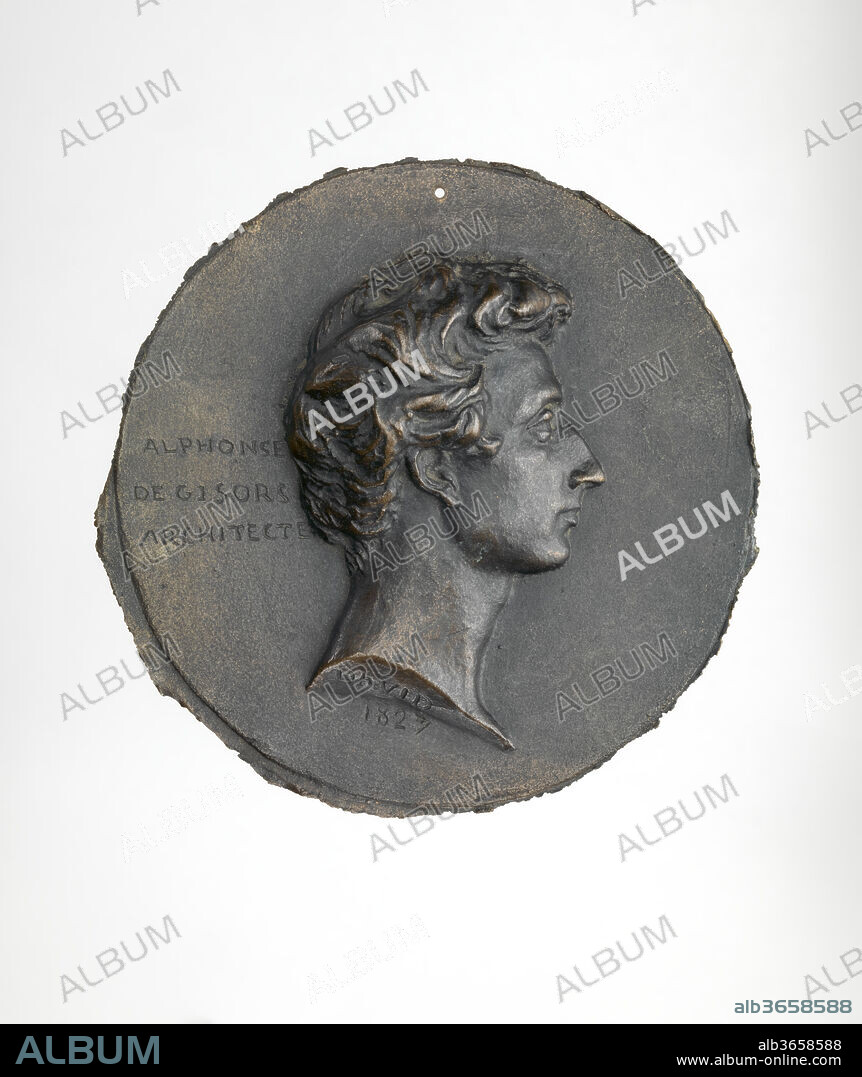alb3658588
MEDALIST: PIERRE JEAN DAVID D'ANGERS. Alphonse de Gisors (1796-1866)

|
Ajouter à une autre Lightbox |
|
Ajouter à une autre Lightbox |



Avez-vous déjà un compte? S'identifier
Vous n'avez pas de compte ? S'inscrire
Acheter cette image.
Sélectionnez l'usage:

Titre:
Alphonse de Gisors (1796-1866)
Légende:
Voir la traduction automatique
Alphonse de Gisors (1796-1866). Artist: Medalist: Pierre Jean David d'Angers (French, Angers 1788-1856 Paris). Culture: French. Dimensions: Overall (confirmed, irregular diameter): 4 7/16 × 4 1/2 × 5/8 in. (11.3 × 11.5 × 1.6 cm). Date: 1827.
Pierre-Jean David d'Angers was the most prolific and one of the most important French sculptors of the first half of the nineteenth century. Throughout his almost fifty-year career (1819-1856) David remained true to his conviction that sculptural monuments dedicated to the achievements of great men and women most permanently and vividly express the greatness of a people. He continuously sought commissions for monuments portraying historical and contemporary figures whom he admired in order to commit their contributions to posterity. His most famous public commission, the figurative pediment of the Pantheon in Paris (1830-1837), which commemorates great men and was dedicated by a grateful nation, exemplifies these life-long principles.
David d'Angers extended his definition of public monuments to include portrait medallions. In the 1820s he dedicated himself to a personal campaign of creating contemporary and retrospective medallic portraits of illustrious sitters. By the end of his life David had executed almost five-hundred portrait medallions, frequently travelling great distances to model his sitters from life. The medallions most often were not commissioned. David himself chose whom he deemed worthy of inclusion into his medallic pantheon. David also did not profit from the portraits. He generally delivered his wax models to professional founders for casting and dissemination through sale.
This portrait of Alphonse de Gisors, which is dated 1827, was made at the beginning of David's medallic project. The medallion celebrates a youthful architect who, although promoted in 1824 to the position of "Architecte" in the department of "Bâtiments Civils" (public buildings), had yet to complete any major works. Gisors was responsible for the preservation and restoration of the nation's public buildings and palaces. In the mid 1820s David occasionally was employed by the Bâtiments, and he may have come to know Gisors through this connection. David's portrait of Gisors thus commemorates the shared ideals of a sculptor and an architect who both were embarking on their careers as creators of public monuments.
The medal, which is attractively patinated but untrimmed, is the only unfinished example known. Finished medals of Gisors (Louvre, Paris and the Galerie David d'Angers, Musées d'Angers) are dated 1830.
Technique/matériel:
Bronce
Musée:
Metropolitan Museum of Art, New York, USA
Crédit:
Album / Metropolitan Museum of Art, NY
Autorisations:
Modèle: Non - Propriété: Non
Questions sur les droits?
Questions sur les droits?
Taille de l'image:
3537 x 4200 px | 42.5 MB
Taille d'impression:
29.9 x 35.6 cm | 11.8 x 14.0 in (300 dpi)
 Pinterest
Pinterest Twitter
Twitter Facebook
Facebook Copier le lien
Copier le lien Email
Email
